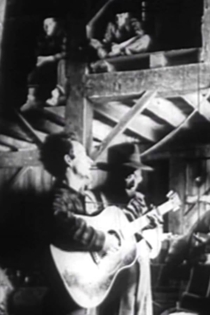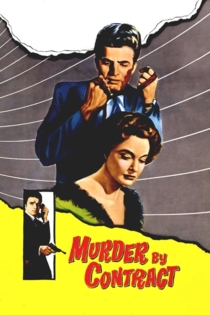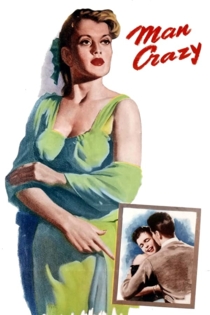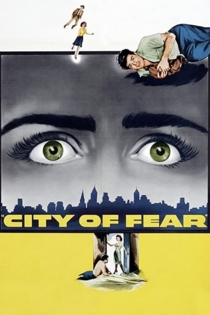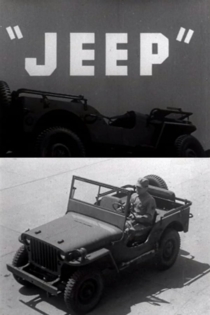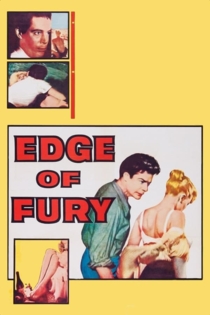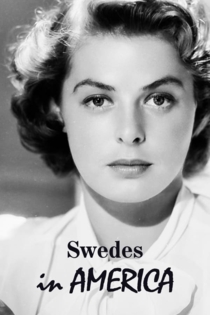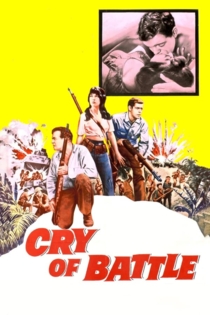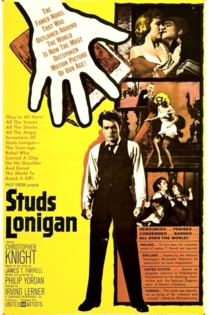
Irving Lerner
1909 - 1976Irving Lerner (7 March 1909, New York City - 25 December 1976, Los Angeles)
Before becoming a filmmaker, Lerner was a research editor for Columbia University's Encyclopedia of Social Sciences, getting his start in film by making documentaries for the anthropology department. He then made films for the Rockefeller Foundation and other academic institutions, later becoming a film editor and second-unit director involved with the emerging American documentary movement of the late '30s. Lerner produced two documentaries for the Office of War Information during WW II and after the war became the head of New York University's Educational Film Institute. In 1948, Lerner and Joseph Strick shared directorial chores on a short documentary, Muscle Beach. Lerner then turned to low-budget, quickly filmed features. When not hastily making his own thrillers, Lerner worked as a technical advisor, a second-unit director, a co-editor and an editor.
Lerner was cinematographer, director, or assistant director on documentary films such as One Third of a Nation (1939), Valley Town (1940), The Land (1942) directed by Robert Flaherty, and Suicide Attack (1950). Lerner was also producer of the OWI documentary Hymn of the Nations (1944), directed by Alexander Hammid, and featuring Arturo Toscanini, and co-director with Joseph Strick of the short documentary Muscle Beach (1948).
Irving Lerner was also an important director and film editor with directing credits such as Studs Lonigan (1960) and editing credits such as Stanley Kubrick's Spartacus (1960) and Martin Scorsese's New York, New York (1977). Lerner died during the cutting of New York, New York, and the film was dedicated to him.
The "Blacklist": Irving Lerner was an American citizen and an employee of the United States Office of War Information during World War II who worked in the Motion Picture Division. Lerner was allegedly involved in espionage on behalf of Soviet Military Intelligence (GRU); Arthur Adams was Lerner's key contact.
In the winter of 1944, a counterintelligence officer caught Lerner attempting to photograph the cyclotron at the University of California, Berkeley Radiation Laboratory, which was part of the Manhattan Project. The cyclotron had been used in the creation of plutonium and Lerner was acting without authorization. Lerner resigned and went to work for Keynote Recordings, owned by Eric Bernay, another Soviet intelligence contact. Arthur Adams also worked at Keynote.
Description above from the Wikipedia article Irving Lerner, licensed under CC-BY-SA, full list of contributors on Wikipedia.
China Strikes Back
Harry Dunham, Irving Lerner
Teh Chu, Mao Zedong
In 1936 and 1937 Harry Dunham shot "several hundred feet of film," being the first cameraman to penetrate into the Shensi region and obtain footage of the Communist forces in China. He smuggled his film out and placed it in the hands of Frontier Films. Leyda, Lerner, Meyers and Maddow (they had to use pseudonyms) spent four months preparing the film for publication. In that time, the Chinese situation altered to such an extent that Frontier had to change the scenario several times in order to keep up with events...the producers had to make a happy change in the theme of China Strikes Back. It was no longer a film showing the Chinese people moving toward unity. It became a pictorial history revealing the how and why behind a realized unity. (IMDb)
China Strikes Back

Muscle Beach
Joseph Strick, Irving Lerner
Muscle Beach was shown in competition at Cannes in 1949 and won a prize at the Edinburgh International Film Festival in 1951. The short became a cult favorite, screening at film clubs around the world. Strick used an army surplus movie camera to shoot the film during weekends in the fall of 1948. The songs in “Muscle Beach,” composed and sung by political folk singer Earl Robinson, with lyrics by screenwriter and poet Edwin Rolfe, accent the film’s three-movement structure as it transitions between soaring gymnastics shows, flirty beachgoers and children playing near the now-demolished pier at Ocean Park.
Muscle Beach
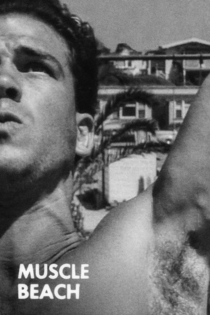
Pie in the Sky
Ralph Steiner
Russell Collins, Elia Kazan
At a skid row mission, a cleric opines as men wait to eat. After his sermon, he brings out a pie and cuts it into small slices. The two men at the end of the line get none. They leave the mission and head for a garbage dump where junk becomes props for their play. A dress form becomes Mae West; a rusted car gives them a wild ride. Then, one dresses as a priest and promises pie in the sky. By the end, they sport metal halos.
Pie in the Sky

The Royal Hunt of the Sun
Irving Lerner
Robert Shaw, Christopher Plummer
The Spanish explorer Pizarro captures the Inca god-chief Atahualpa and promises to free him upon the delivery of a hoard of gold. But Pizarro finds himself torn between his desire for conquest and his sense of honor after friendship and respect develops between captive and captor.
The Royal Hunt of the Sun

Hay que matar a B.
José Luis Borau
Darren McGavin, Stéphane Audran
In a fictitious South American country there's lots of political tension, the labor-unions have all their members on strike. The public demands the return of politician B. from exile. However private trucker Pal can't afford to strike, so he's beaten up and his truck burned. In the headlines he's described as strike-breaker. This is only part of an intrigue which shall get him to murder B.
Hay que matar a B.

A Town Called Hell
Robert Parrish, Irving Lerner
Telly Savalas, Robert Shaw
A group of Mexican revolutionaries murders a town priest and a number of his christian followers. Ten years later, a widow arrives in town intent to take revenge from her husband's killers.
A Town Called Hell

